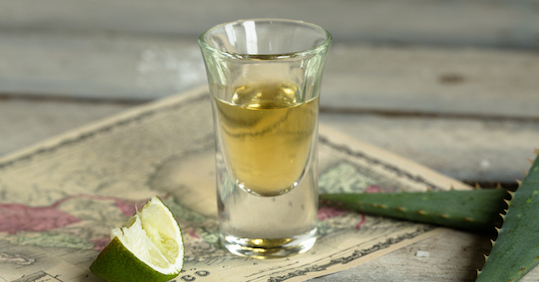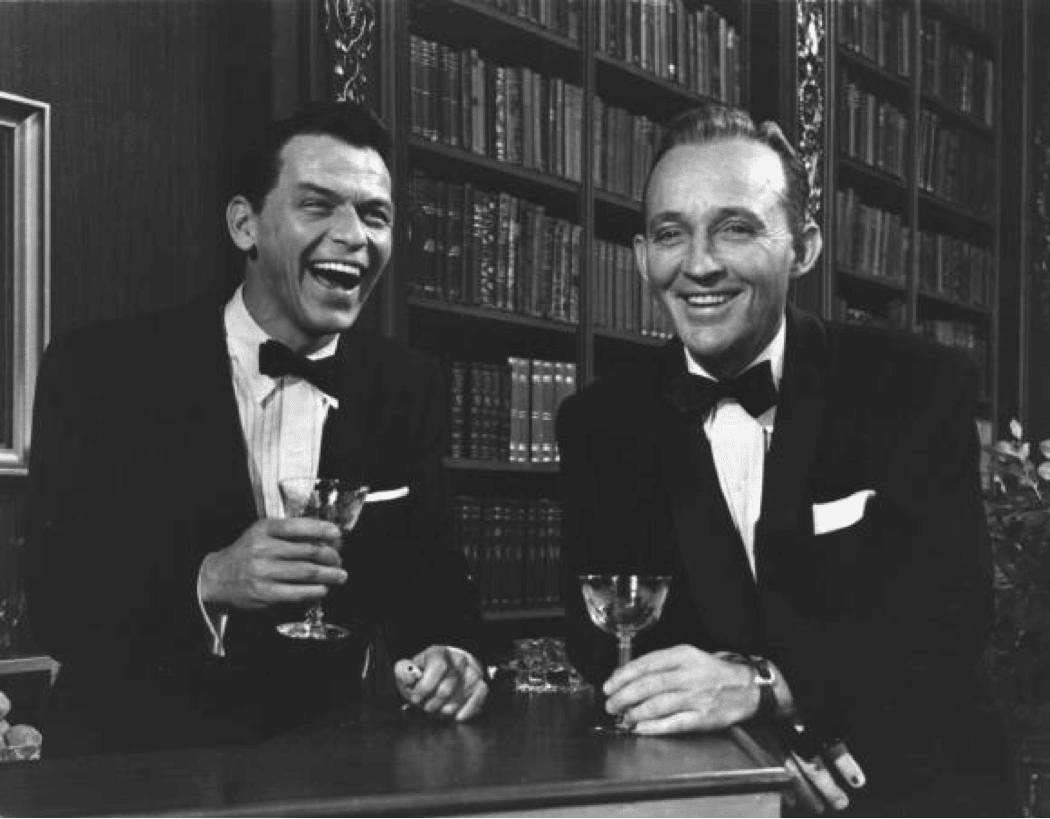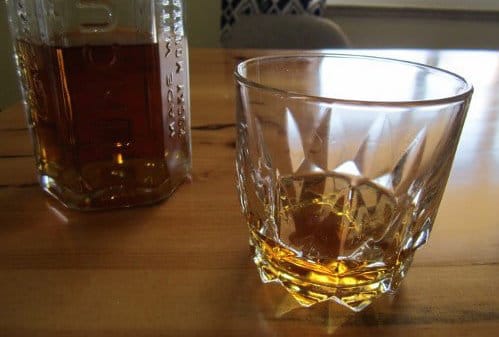
Rum is, without a doubt, the most underappreciated spirit. When one thinks of manly, sophisticated, classic drinks, rum is rarely on the list. Whiskey, and all its variants, is easily pictured in the hands of a mustachioed gentleman sitting in a recline with a book. Gin is the base for the eminently classy martini, as well as other noble cocktails. Even vodka has become a staple of urban bars, and has been the spirit of choice in Eastern Europe for centuries. Rum, however, is most often perceived as being nothing but a product of piracy and slavery, with no real benefit outside of being a mixer with Coke or fruity tropical beverages.
Au contraire, rum has a rich history (even playing a part in the American Revolution!), and an even richer present and future as a drink that can be enjoyed neat or with ice, or as a foundation in a number of spectacular cocktails. Let’s take a look at what rum is, its fascinating history, how to drink and enjoy the spirit, and then a couple cocktail ideas.
What is Rum?
In its most simple definition, rum is an alcoholic beverage distilled from sugar cane, either from the raw juice, or most commonly from molasses (which is refined from sugar by boiling). After distillation, rum is bottled right away, making a clear product that is often only used as a cocktail mixer; or, it is aged in a barrel — usually a used whiskey barrel — for a minimum of year, but oftentimes longer, creating a dark, rich spirit that can be sipped like a whiskey. You’ll notice that’s less time than whiskey; this is because the majority of rum production happens in the Caribbean, where the tropical climate facilitates faster aging than in the higher latitudes. Rum also ages quicker because it contains fewer congeners than other spirits, requiring less mellowing than, say, a fiery Scotch or bourbon.
Unlike whiskey and other spirits, there is no real standard for grading, aging, labeling, etc. Rums can be clear or very dark, they can be spiced, they can be aged, or they can even be artificially colored to make them seem aged (these are the cheaper colored rums, like Bacardi Oro). While this can make understanding rum a little more difficult, it makes it an incredibly diverse spirit. Today, you can buy a quality rum for much less than a quality whiskey, and enjoy it neat or on the rocks like any other spirit.
This wasn’t always the case, though…
The Sordid History of Rum
As I previously mentioned, rum is often perceived as being the drink of choice for scallywags and bootleggers. Unfortunately, that’s rather accurate, at least with rum’s beginnings. While the first fermented beverage from sugar cane juice was produced a few millennia ago, it wasn’t until the 1600s in the Caribbean that it was distilled and first resembled the rum we know today. In that time, distilling was a practice that most folks were familiar with. Whiskey and brandy were fairly common drinks in Europe, so when the Brits brought their stills to the Caribbean, it was only a matter of time before cane juice or molasses was run through them. It may have even been slaves that first produced rum, and they were definitely given rum by their masters, largely to placate them. In fact, rum production played a large part in the Atlantic triangular slave trade. Sugar, most often in the form of molasses, was traded from the Caribbean to New England, where it was distilled into rum. That rum was sold, and along with other raw goods (like lumber and whale oil) was sent to Europe. From there those raw goods turned into manufactured products like guns, clothing, etc., which were traded with African kings for slaves, who were then sent to the Caribbean to work on sugar plantations. And so rum and slavery became forever connected.

Eventually, rum production made its way north to the colonies in what is now America. In some ways it was easier to produce there since fuel (in the form of wood) was more readily available, the Scots and Irish workmen knew the distillation process, and standing amongst the hot fires of a distillery was far more tolerable in cold New England than in tropical Barbados. By 1700, rum became the most heavily traded Caribbean commodity, and provided the bulk of Britain’s profit from the new American colonies. It’s estimated that the average adult male in America at this time consumed 4-5 gallons of the stuff every year. Rum even became acceptable as a form of currency, with North Carolina’s first piece of real estate being priced at 4 gallons of rum. It would not, however, maintain its grasp as American’s most popular spirit, as we’ll see next.
Rum and the American Revolution
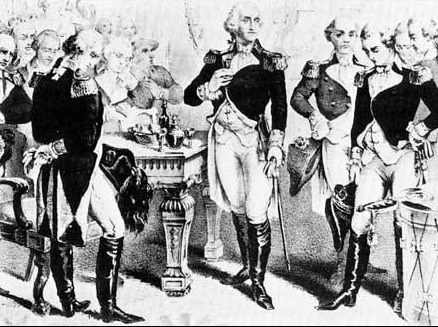
While certainly not entirely provoking the Revolution, rum — and more particularly, its taxation — definitely played a part in sparking revolutionary sentiments. In the early 1700s, New Englanders took up trade with French, Spanish, and various other Caribbean colonies. Britain was adamantly opposed to this (as it cut their own profit), and instead of outright abolishing trade, imposed the Molasses Act of 1733. This put a tax on any molasses imported from non-British colonies. Since the British West Indies priced their molasses at a much higher rate, this could effectively ruin New England’s rum economy, which was a large part of the economy as a whole. Smuggling, however, took care of that little snafu, and the tax was rarely paid. In spite of getting around the tax, the move by Britain started to inflame the revolutionary passions of the colonists.
The Sugar Act of 1763 further escalated the conflict between the colonies and the motherland. That piece of legislation, passed as the Molasses Act was set to expire, cut the molasses tax in half, but this time Britain intended on making good about actually collecting the tax. The act had other economic implications as well, but for the purposes of this article, further reduced the profit margin on rum. These two acts, along with the Stamp Act of 1764, were truly the flint and tinder that sparked the beginnings of the American Revolution.
Since rum required the import of molasses, Americans began to favor whiskey in the late 1700s, as it was an entirely local product, meaning all the profits stayed local. Drinking whiskey in fact became patriotic! The young country’s entry into the War of 1812 raised prices even higher, and solidified rum’s decline in the states.
Yo Ho Ho: Rum and the Sea
“Such a day; rum all out. Our company somewhat sober; a damned confusion amongst us! Rogues a plotting. Talk of separation. So I looked sharp for a prize [and] took one with a great deal of liquor aboard. So kept the company hot, damned hot, then all things went well again.” -Blackbeard’s diary, 1718
Rum has long been associated with all things oceanic, be it piracy or simply naval endeavors awash in the golden spirit. You can see above that Blackbeard used rum to placate his crew, much like slaveholders did in the North American colonies. Unfortunately, there aren’t great historical records about piracy, so much of what you hear is simply conjecture. It is known, however, that while rum was leading to revolution in America, it was also consumed in large amounts by pirates, often before battles to increase the men’s bravery. It wasn’t just with pirates that rum was the drink of choice, though.
The British Admiralty favored rum as well, making it the ration of choice for their seamen in the mid-1600s. It wasn’t for taste, however. It was an economical choice; with Britain’s capture of Jamaica from the Spanish in 1655, rum became the cheapest option. It actually wasn’t very palatable on its own, and was mixed with water and various spices to form what’s known today as grog.
Outside of the military, however, rum wasn’t consumed en masse by the larger population. There was brandy, wine, beer, and the ever-present whiskey. Rum seemed destined to perhaps slip into oblivion as a cheap, forgotten beverage. Somewhat paradoxically, though, prohibition in America gave way to its return in the states.
Prohibition, and Rum’s Slow Return
While prohibition in America led to bathtub gins and whiskeys, it gave Cuba a great excuse to promote tourism. And Cuba’s primary local alcoholic beverage? Rum. Specifically, Bacardi rum. Papa Hemingway made his way to Havana and popularized now famous cocktails like the daiquiri, the mojito, and the Cuba libre. Prohibition did more for rum in the states than anything else, a fact which Bacardi took major advantage of. Their marketing genius made the brand extremely recognizable, and it came to be associated with romantic, tropical vacations. While World War II and the Cuban Missile Crisis slowed their roll, Bacardi simply moved its main distilleries to Mexico and Puerto Rico, and continued to position rum as an exotic mixer. All around the country, tiki bars popped up with plastic huts and palm trees, and served up cold and colorful rum-based cocktails.
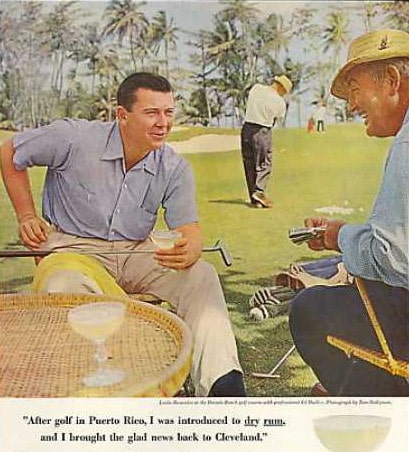
Today, the evolution of rum continues. While rum was once regarded largely as cheap slop, like many other small-batch alcoholic beverages in America, it’s enjoyed a bit of a renaissance. The worst rum you can buy today is definitely far better than what sailors would have been drinking in the 1800s. Yet because of its lowbrow history, it still seems to carry the connotation of only being a mixer rather than a spirit that can be enjoyed as a sipper. That’s unfortunate, because good rum truly can be savored straight.
Styles of Rum
Rum is hard to classify. Again, it’s not like whiskey, which has strict regulations for aging and labeling. Rum is more of a free-for-all, with each production nation having different rules and regulations for aging, final proof, etc. It can be called and labeled rum as long as it’s a distilled beverage of sugar cane juice or molasses. So we’ll take a look at a couple different ways of categorizing the spirit (and even these aren’t entirely agreed upon in their definitions):
By Nationality (often described, however, in terms of former colonizations)
Spanish (Cuba, Dominican Republic, Puerto Rico, Panama) — Known for lighter rums, that are either unaged or very lightly aged, producing a sweeter, crisper, and cleaner taste.
English (Barbados, Bermuda, Jamaica) — Known for darker, richer rums that have been aged at least a year. They often have a more pronounced molasses flavor.
French (Haiti, Guadeloupe, Martinique) — More of a specific style, being distilled in pot stills from fermented cane juice. Often aged in used cognac barrels (but also sometimes used oak barrels) for a period of multiple years.
By Color/Body
White/Light/Silver – Clear in color, and almost always unaged. This is the most popular rum style, as it’s cheapest to produce, and thus cheapest for the consumer. Not great for sipping; usually used as a mixer, particularly in Papa Hemingway’s favorites, the mojito and the daiquiri.
Gold/Oro – Golden in color (rather than a dark brown), denoting aging, but often minimally so. It’s often still fairly light-bodied and used as a mixer rather than a sipper, but not always. This category is tricky because “spiced” rums (like Bacardi’s and Captain Morgan’s) are usually based on this style, but have some added flavoring/coloring, usually in the form of caramel, vanilla, and cinnamon. This is where reading the label comes in handy.
Dark/Black – Dark brown/golden in color. Most often these have been aged for long periods of multiple years in wooden barrels. They have the richest, most complex flavors, and are your most likely sipping rums. They are comparable to a good brandy or whiskey, and can even replace those spirits in cocktails (see below for a rum-based Old Fashioned).
How to Drink Rum + Cocktails
Imbibing a sipping rum is much like drinking any other spirit. We’ve already covered that subject at length regarding whiskey, so I’ll just give a quick recap here as well as a couple of rum specifics:
- It’s best to use some sort of glass that tapers near the top, in order to concentrate the aromas. Smell actually accounts for about 70-80% of what we know as taste.
- Because of the above fact, your first task is to simply smell the spirit. Don’t get your nose too deep in the glass, as the alcohol vapors will take over. For the same reason, take a sniff with your mouth open a little bit; this was a tip I was given from a distiller, and it makes a remarkable difference in “nosing” the spirit.
- Take an initial sip and just let it coat your mouth. Swirl it a little bit, then swallow.
- Enjoy your spirit with small sips. You’ll notice it’s sweeter than whiskey, since it’s distilled from a byproduct of sugar rather than grain. This makes it taste more dessert-y. Also pay attention to how much vanilla, caramel, and molasses (think root beer-ish flavor) you’re getting.
- Try a number of rums to learn how to distinguish them as well as learn what you like. One way to do this is to host a tasting party, in which everyone brings a different bottle of rum and you simply taste around and talk about the spirits.
And now for a few cocktails:
Hemingway Daiquiri
This was Hemingway’s preferred drink, and his preferred recipe. He enjoyed it without added sugar, making it a little bit tart, so feel free to add simple syrup should you be so inclined. Make it a double to create the famed Papa Dobles.
- Ice
- 2 ounces white rum
- 3/4 ounce fresh lime juice
- 1/2 ounce fresh grapefruit juice
- 1/2 ounce maraschino liqueur
Fill a cocktail shaker with ice. Add all of the ingredients and shake well. Strain into a chilled glass. It’s that easy!
Rum Old Fashioned
Once upon a time, like in the early 1800s, the word “cocktail” was synonymous with what is now known as the Old Fashioned. In those days, however, it was any spirit mixed with bitters, water, and sugar. Whiskey came to be the dominant choice for the Old Fashioned, but try it out with rum and I guarantee you’ll be pleasantly surprised.
- 2 ounces dark rum
- 2 dashes Angostura bitters
- 1 sugar cube
- Few dashes plain water
Place sugar cube in an old fashioned glass and saturate with bitters; then add a few dashes of plain water. Muddle until dissolved. Fill the glass with ice cubes and add rum. Optional: garnish with orange slice, and a cocktail cherry.
Homemade Spiked Eggnog
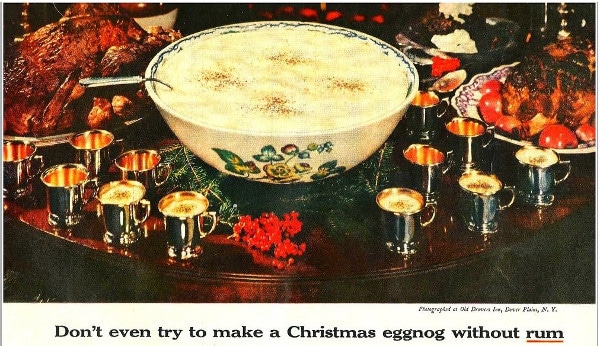
Rum and eggnog (or eggnog-like drinks) have been bedfellows for over 4 centuries. This is a simple and tasty recipe that is easily scaled to serve an entire dinner party.
- 1 egg
- 2 teaspoons sugar
- 1 ounce heavy cream
- 1/2 teaspoon almond extract
- 1/2 teaspoon vanilla extract
- 5 ounces rum (generally light rum)
- Cinnamon and nutmeg for garnish
- Separate the egg into two small bowls.
- Beat the yolk until stiff.
- Beat the white with 1 tsp. sugar until peaks form.
- Slowly fold the white and yolk together.
- Separately, beat the cream with the almond, vanilla, and 1 tsp. sugar in a bowl until stiff.
- Slowly fold in the cream with the egg mixture.
- Add rum and stir gently.
- Refrigerate overnight, or serve immediately over ice
- Garnish with grated nutmeg and cinnamon.
Hot Buttered Rum
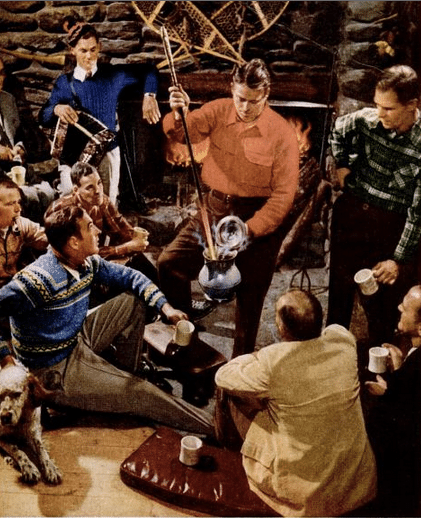
Next time you make buttered rum, use a hot poker to warm it up! That’s how the early colonists did it.
This cocktail also has a rich, and particularly American tradition. After molasses began being imported from Jamaica, and distilleries popped up in New England in the mid-1600s, colonists began adding rum to hot beverages, creating the hot buttered rum, which is a modification of the hot toddy. Here’s what is purported to be an early American recipe for the drink, found in a 1952 edition of Life Magazine:
- 2 ounces Puerto Rican rum
- 1 teaspoon sugar
- 1 slice lemon, studded with 6 cloves
- 1 stick cinnamon
- Pinch of nutmeg
Place in preheated mug or Old Fashioned glass, fill with boiling water, and drop in generous gob of butter. Carefully float a flaming tablespoon of rum on top.


